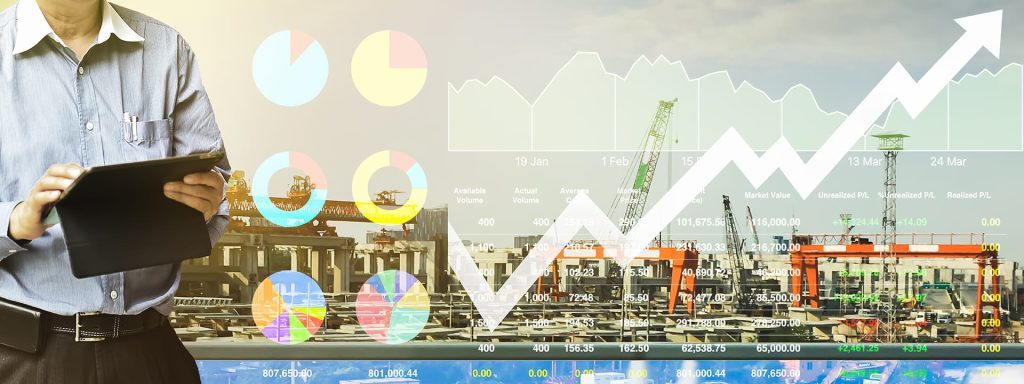
It’s that time of year again — time to take a look at top trends affecting the construction industry and what steps you can take to prepare. Here are the top four trends we expect to pick up momentum during 2019.
1) Offsite construction (prefabricated and modular) will continue to gain traction, helping construction firms complete projects on time and within budgets.
Nearly two-thirds (64%) of contractors expect the cost of hiring skilled workers to increase in the next six months. And The McKinsey Institute reported that large construction projects are up to 80% over budget. One solution to this problem is to build repeatable modules offsite in controlled environments, then transport them to the jobsite for incorporation into the larger building project.
The controlled environment eliminates delays caused by weather and improves quality. Detailed up-front planning for building modules reduces material waste, and addresses the labor shortage problem — a small number of full-time employees are trained to create repeatable designs. Because modules are built off-site then transported when needed to the jobsite, other on-site work can continue without interruption as the modules are built. Construction cameras can be used at the offsite building facility as well as during transport, to ensure safety and adherence to regulations.
According to the U.S. Chamber of Commerce Commercial Construction’s Q1 Index, contractors are turning to prefabricated and modular building materials as a way to increase efficiency, worker productivity and cost savings. In fact, 50% of contractors and 72% of general contractors report their companies already use prefabricated components. Potential savings are impressive — out of over 800 architecture, engineering and contracting (AEC) professionals surveyed by McGraw-Hill Construction, 66% report that project schedules decreased; 65% report that project budgets decreased; and 77% report that construction site waste decreased.
As the labor shortage continues to plague contractors while demand for construction continues to rise, expect to see more firms employing offsite construction practices in 2019.
2) Buildings are getting smarter and greener.
Historically, the various systems of a building such as lighting, heating, ventilation and video surveillance have operated separately. In a smart building, all of the operational systems communicate using Internet of Things (IoT) connectivity. This reduces resource consumption — sensors detect changes in activity and communicate with other systems to preserve resources, for example, reducing the temperature or turning off lighting in empty rooms.
Given that buildings account for up to 70% of energy consumption in major cities and 30% of greenhouse gas emissions globally, smart buildings stand to reduce the carbon footprint dramatically. They also increase revenue opportunities and enable the delivery of new business models. For these reasons and more, they are extremely marketable — tenants expect that their offices have modern, easy-to-use technology.
They mark a major step forward in meeting the standards of Leadership in Energy and Environmental Design (LEED). According to the U.S. Chamber of Commerce, LEED-certified buildings are estimated to have $1.2 billion in energy savings, $149.5 million in water savings, $715.2 million in maintenance savings and $54.2 million in waste savings.
With all of these potential savings and benefits, it’s no wonder Orbis Research analysts believe that over the next few years, Smart Buildings market size will continue to grow and could reach 635 million by 2022.
3) Construction cameras will simplify project documentation with 360-degree interior walkthroughs.
A smaller but important trend we’re seeing is the increased use of construction cameras for 360-degree walkthrough inspections, which can help track progress at every stage of a project and reduce documentation time by more than 50%. Footage can be shared easily with everyone involved — even remote stakeholders — reducing the need for travel and enabling detailed information about project status to be disseminated quickly for faster decision making and budget approvals.
Construction cameras can transmit video footage and photos of the jobsite to project management software, where it can be organized by location, date, time and other parameters, creating a complete visual record of the construction project.
As budgets and timelines continue to shrink in 2019, expect to see more firms making use of video documentation, including 360-degree walkthroughs.
4) AI and machine learning will improve efficiencies on the jobsite and behind the scenes.
Artificial intelligence (AI) and, in particular, machine learning techniques are becoming more prevalent in construction as a way to optimize operations and identify potential time and cost savings. Here are some potential use cases:
- Machine learning can be used to fine-tune construction schedules and continually enhance planning efforts.
- Sensor data can be collected and analyzed to identify patterns, areas of concern or opportunities for cost savings. Firms can prioritize maintenance to prevent downtime.
- Image recognition and classification algorithms can mine data collected from construction cameras to help inform training and safety practices or identify potentially unsafe worker behavior.
- AI-based applications can apply learning algorithms to track jobsite progress and labor productivity in real-time against original plans, so project managers can make adjustments, as needed, to stay on-time and on-budget.
- Machine learning algorithms can be applied to 3D models captured by drones and cameras to detect design any errors, eliminating costly rework and design flaws.
As the industry continues to adopt machine learning practices in 2019 and beyond, more use cases will evolve, leading to greater efficiencies and cost savings on the jobsite.
How Construction Cameras Fit Into the Trends
Construction cameras are front and center in all four of these trends, providing technology to help ensure jobsite safety onsite and offsite, simplify project documentation, reduce operational costs and improve communication throughout the project lifecycle. Try a live TrueLook demo to learn how we can help you capitalize on trends in the construction industry in 2019 and beyond.

